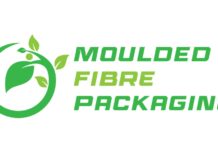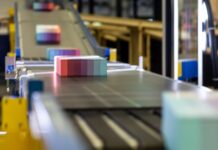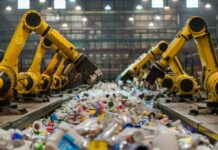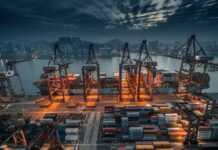It is expected that in 2024, the packaging industry will be a year of persistent destocking, C-suite shakeups, many manufacturing layoffs, as well as dozens of deals consolidating specific parts of the industry, apart from certain other challenges and changes.
It is well to be noted that companies’ geographic footprints as well as the industry landscape at large may feel and look a little different, as similar storylines around extended producer ownership, material swaps, as well as other sustainable packaging solutions also go on to advance.
Apparently, these happen to be some of the top factors to watch in 2024.
Manufacturing footprints go through a shift as producers balance facility closures with openings
With a minimum of 9,000 packaging jobs getting affected due to facility closures last year, the changes in companies’ manufacturing footprints are pretty evident. But with many equipment enhancements and facility openings up for grabs for 2024 and beyond, there happen to be many people who are pondering what the net result is going to be as packaging producers look to balance the openings as well as closures with demand.
Company executives happen to be consistently referring to shifting footprints as part of optimization, or, if one can say, rationalization plans, during a pretty rigorous 2023. Berry Global happened to close at least 20 facilities, and the closure of WestRock’s Tacoma, Washington, mill went on to affect 400 people. Ball thereafter decided to permanently change plans so as to build a beverage plant in North Las Vegas. Equipment shutdowns such as Graphic Packaging International permanently removing a coated recycled paperboard machine at its mill in Kalamazoo, Michigan, and International Paper announcing production cessation when it came to a pulp machine in North Carolina and another in Florida happened to be certain eye-opening steps.
However, footprint shifts are not solely because of consolidation or facility idling resulting from a demand that’s lagging. Some legacy equipment shutdowns are in sync with new equipment startups as well as greater automation in order to boost functional efficiencies.
It is also not just a shrinking matter; many organizations happen to be adding space. Fiber-centric businesses, specifically the recycled grades, happen to be on an opening streak.
According to an October 2023 statement from Moore & Associates’ President, Bill Moore, it is well to be noted that North American containerboard capabilities have already expanded prominently from 2020 to 2023. Apparently, 15 new mills came online, which is in all likelihood going to affect supply as well as demand dynamics going forward.
Some of the 2023 openings went on to include Cascades’ recycled containerboard plant in Bear Island, Virginia; WestRock’s corrugated box plant in Longview, Washington; International Paper and Pratt Industries’ corrugated packaging facilities; as well as York Container Company rounding out 2023 with the start of its corrugated box facility in Elgin, Illinois.
Experts go on to forecast that the fiber facility opening spree, especially for recycled grades, will go on in the near term. For instance, the new Total Fiber Recovery plant, which happens to be in Chesapeake, Virginia, is all set to begin coming up with recycled pulp this month, says Chaz Miller from Miller Recycling Services. Yet another new Pratt facility is all set to begin production late in 2024 in Peach County, Georgia. Apart from this, Graphic Packaging’s new $1 billion, 640,000-square-foot coated recycled paperboard mill, which happens to be in Waco, Texas, is anticipated to begin its operations in 2026.
Driven by inflation, consumer purchasing adapts
It is worth noting that cost-conscious consumers’ purchasing habits can go on to signal a packaging demand renormalization with years of turbulence, but packaging companies are beginning the year with price rises. At the very minimum, recovery from 2023’s demand as well as sales valleys happens to be expected, as evidenced by the Institute for Supply Management’s December 2023 prediction, which stated that manufacturing revenues will rise, with growth anticipated to accelerate in the second half of this year.
Following a consumer spending glut, packaging company executives had begun pointing to consumers pulling back when it comes to purchases in 2023, especially later in the year. Mostly driven by economic elements like inflation, packaging executives went on to notice that consumers not only make fewer purchases but, at the same time, are trading down as well as purchasing more cost-effective pack sizes and also store brand products rather than branded or luxury goods.
The CEO of Pactiv Evergreen, Michael King, had opined in May last year that consumers happen to be deprioritizing specific pricier products as part of the consumption transition, which includes eating at home more or even choosing fast food instead of sit-down restaurants. The executives from Silgan stated that consumers who trade down by buying more groceries rather than prepared food go on to benefit sales for specific packaging sectors like metal food containers. It is well to be noted that in recent earnings calls, Amcor executives went on to cite continued weak demand by consumers and those at Graphic Packaging and Sonoco confirmed that cautious consumers happen to be influencing sales.
The fact is that persistent inflation concerns happen to continue in order to create uncertainty when it comes to the specifics of the industry’s recovery trajectory. Referencing GPI’s endeavor to pull up from the lows when it comes to destocking and demand uncertainty, its CEO, Michael Doss, went on to explain in November that this recovery is not linear as it tends to be a bit bumpier than anybody would say.
Apparently, inflation happens to be a sticky problem that heavily goes on to influence both consumers’ purchasing decisions and packaging companies’ business decisions. In late 2023 and early 2024, fiber packaging companies such as International Paper, Packaging Corporation of America, and WestRock went on to announce their first corrugated price rises in years. And Sonoco will execute a minimum of 6% price hike on all converted paperboard products.
Although the inklings of recovering demand began to emerge in the 4th quarter of 2023, Fastmarkets happened to call the price increases, a kind of a bold move that happened to be questioned by most in the marketplace. Greif went ahead with 2024 by announcing a price rise on uncoated recycled board, thereby prompting senior paper and packaging analyst at Truist Securities, Michael Roxland, to issue a commentary noting that the inflationary pressures may also spur producers to elevate prices on certain grades when it comes to virgin boxboard.
Prominent policies get closer to becoming a reality
U.S. states as well as international governmental bodies are all set to be some of the most influential benchmark setters in 2024 when it comes to the future of packaging materials, labeling, as well as extended producer ownership by way of finalizing or executing policies, and this is sans considering fresh legislation that is sure to be on the table this year.
Notably, California went on to create buzz in waste policy in the years that have gone by, such as SB 343, which looks to crack down on recyclability labeling, as well as SB 54, an EPR law affecting plastic packaging producers. Executing those laws happens to be a long process. CalRecycle approached 2024 to detail materials that could go on to be covered and share highly expected draft rules for the EPR program. California is also anticipated to select a producer responsibility organization.
Other states, such as Colorado, Maine, and Maryland, as well as Oregon, will also continue to go ahead with preparatory or execution activities for their own takes when it comes to EPR for packaging.
It is worth noting that the focus on per- and polyfluoroalkyl substances, or forever chemicals, has been growing nationally. States happen to be leading on regulating PFAS when it comes to packaging. Among the most common kinds of state-level packaging laws coming into force in 2024, such as in Colorado, Maryland, Hawaii, Minnesota, Rhode Island, as well as Washington, are bans on PFAS in specific food packaging, which goes on to raise the stakes on finding choices such as providing moisture and grease barriers when it comes to paper packaging.
Globally, sweeping new rules are anticipated to enter final negotiations within the European Union. The regulation is all set to have major implications in terms of stricter recyclability standards as well as spur shifts right from single-use packaging to reused ones. Already in January, the government of Canada made an announcement about launching a consultation in terms of establishing a registry that would require plastic producers to report on the plastic they happen to place on the market and also track its life cycle.
Scrutiny grows on end-of-life issues
The question of how to best manage materials after use, either by way of disposal, recycling, or certain other avenues, and how to interact with those discard instructions, happens to remain a central issue when it comes to packaging. The area has a dearth of standardization, and debate could anyway go on to be more complex this year.
The packaging sector happens to be focusing more on designing for recyclability in order to enhance recycling in general. New scannable codes as well as applications look to help.
Significantly, the Federal Trade Commission’s guidance when it comes to packaging labeling and environmental marketing more broadly looks out to bring some modernized clarity; the present review is still ongoing after issues of recyclability took center stage in 2023.
Since the Green Guides’ last review, which was kind of major in 2012, compostable packaging has gone on to become mainstream and also a part of many companies’ 2025 sustainability objectives, but it has also gone on to lead to some contamination at compost sites as well as in recycling streams. Therefore, the leading organizations are now looking for greater uniformity in how compostable as well as non-compostable packaging is designed, colored, and labeled in order to create more distinguishable visual signals. At the same time, California happens to be advancing the execution of SB 343.
Chemical recycling practices, as well as how they happen to get incorporated into recycling claims by way of mass balance as well as perceived by consumers, happen to be yet another emerging challenging area for the Green Guides to look into. More packaging companies have underlined chemical recycling operations’ potential to be a store for hard-to-recycle flexible packaging and also a kind of source of feedstock so as to replace some use of virgin materials. Amcor as well as SEE, for example, both have partnerships with ExxonMobil.
The plastic targets loom in 2025
Apparently, 2024 can very well be the year nations reach a United Nations-driven agreement to stop plastic pollution, but consensus-building has been, as assumed, challenging. And ever since the circular economy-focused Ellen MacArthur Foundation and UN Environment Programme went on to launch the Global Commitment in 2018, the year 2025 has indeed loomed large.
Over 1,000 organizations have gone on to sign on to the voluntary pact so as to make all plastic packaging recyclable, compostable, or else reusable by 2025, an objective that many brand commitments as well as the U.S. Plastics Pact goals mirror. The EMF bent also calls for eradicating problematic or unnecessary plastic packaging, transitioning from single-use to reuse models by way of relevant, lessening the use of virgin plastic in packaging, and raising the share of postconsumer recycled plastic.
The point is that as crunch time when it comes to stated deadlines approaches, a recent five-year growth report from the EMF stated that the world would remain prominently off track. The report also demonstrated that reusables only comprise 1% of major brands’ plastic packaging.
The fact is that both 2025 and a potential international agreement happen to be less than a year away. Sustainability reports from 2023 show how brands as well as packaging manufacturers have gone on to make growth in some areas, although they have backslid in others.
In one instance, SEE, the company that was formerly called Sealed Air, went on to announce last year that it was already re-evaluating its 2025 objective in light of insufficient recycling infra for flexible plastics as well as challenges around food-grade recycling.
The fact is that falling short of stated sustainability metrics may not be a first for the sector; still, while the target 2025 deadlines happen to be voluntary in nature, unity on that year does make it quite significant and also raise the pressure.




























